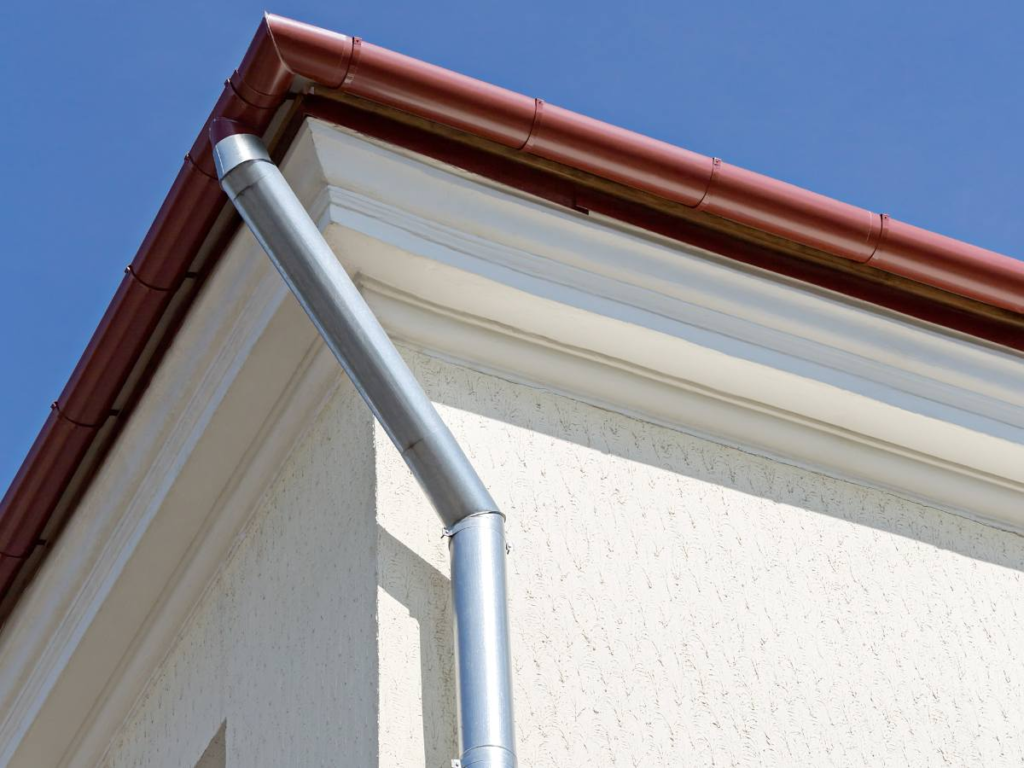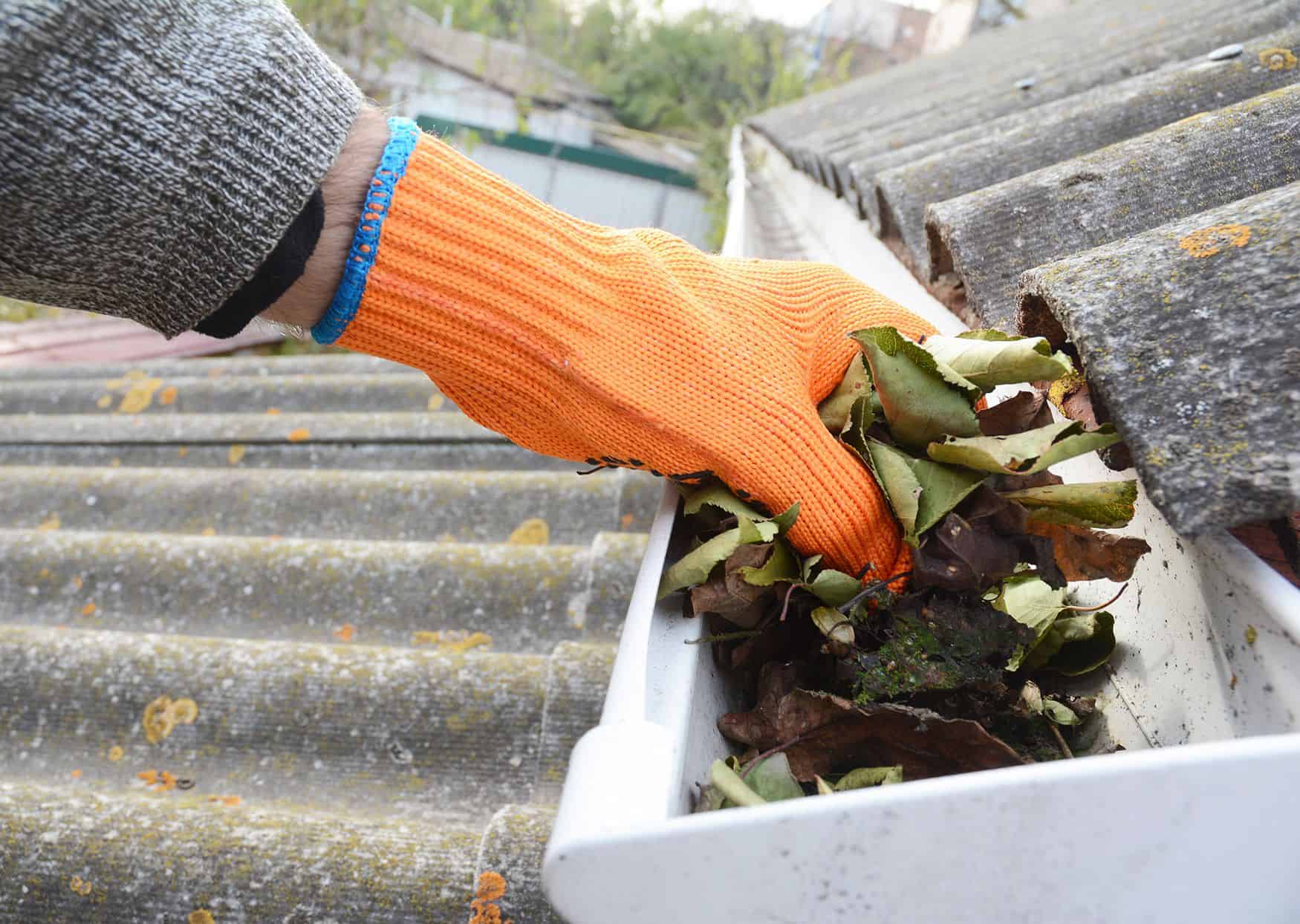
Gutters that aren’t sloped correctly can cause clogging and leaks. Getting the gutters’ fall (or pitch) right can help avoid many problems, including damage to siding and foundation cracking.
To measure gutter drop, attach one end of a string to the highest point of your home’s fascia and the other to its downspout location. Then lower the string 1 inch and make a mark.
Slope
Gutters may look parallel to your roofline from a distance, but they have a small incline that helps them direct water properly. This slant is called the gutter slope, and it’s vital for good function. When gutters have the right slant, they can help to prevent many problems, including overflow, clogging and splashing.
When gutters aren’t slanted enough, water doesn’t flow downhill to the downspouts, which causes overflow and clogging. This can lead to water damage in the siding, fascia and window or door frames, as well as leaks into the home’s foundation. In addition, standing water may encourage the growth of mildew and mold behind the siding, which can affect a homeowner’s health.
The industry standard is to set gutters at about a quarter inch of slope for every 10 feet of gutter run. However, this can vary based on the structure and material of your house’s roof and gutters.
To find the correct slope, you can use a level to mark the highest point of the gutter run and the downspout. Then, lower the end of the gutter downhill to that mark by a calculated amount (using the ratio you’ve just determined). Make sure the gutter is not overflowing when it rains and that the gutter slope is consistent. You can also ask your gutter contractor to measure the slope of your gutters during installation.
Downspouts
Gutters have to be able to collect water and then direct it away from the house. Otherwise, rainwater will simply drip over the front gutter lip and into the siding or erode the foundation. This is why proper gutter slope is so important. It also explains why it’s best to hire an outside company to do your gutter cleaning and inspection.
If your gutters have too little or no slope, they’ll fill up faster than they can drain, which leads to a myriad of problems. One of the most common is that the gutters will overflow when it rains. This can wreak havoc with the house siding, and it can also lead to the accumulation of mold, algae, and bugs.
Ideally, you should slope your gutters enough to allow for adequate drainage, but not too much so that it looks unsightly. A good rule of thumb is that you should have a downspout for every 40 feet of gutter run. This is typically the number that most professional installers use when they install new gutters or replacement gutters. You can find gutter downspouts at most home improvement stores and online. To determine the exact slope of a gutter, measure the distance between the high point of the fascia and the low point where you plan to bury the downspouts. A long string and a string level are the perfect tools for this job.
Installation
Hanging gutters might seem like a simple job, but it isn’t if they are to function properly. They have to be slightly slanted so that the runoff water can flow “downhill” to their downspouts. If they don’t, they can clog and overflow. Misdirected water can lead to roof damage, degraded landscaping and foundation issues, among other problems.
A good rule of thumb is a 1/2 to 1/4-inch drop for every ten feet of gutter run, but there are many factors that influence the exact slope for your gutters. A gutter company knows the nuances that affect your system and can recommend a precise pitch for your home’s particular needs.
To determine the correct gutter slope, first access the fascia board. Then, mark the high point and the end point of your gutter run with a piece of chalk. Next, snap a line between the two points to make a straight line. Repeat the process for each gutter run around your roofline. Afterward, re-install your gutters using the new slope and a new bracket at each end of the run. Be sure that the downspouts are at each end of the gutter, too. This ensures that rainwater flows through both downspouts, rather than one on its own. This also reduces the risk that a downspout will become detached from the gutter.
Maintenance
A well-maintained gutter system is essential to protect your home’s roof, fascia boards, siding, walls, windows and foundations from water damage. However, gutters can become clogged with leaves and debris and need to be cleaned regularly. Research from Insulation Express suggests it can cost up to PS150 to hire a professional to clear your gutters, so learning how to do this yourself could save you money.
It is recommended that homeowners clean their gutters twice a year, once in late Spring and once in Autumn. To do this you will need a ladder, bucket, gutter scoop or garden trowel and gloves. Start in one corner of the gutter section and work your way to the middle, removing any debris and washing down the gutters and downspouts with the hose. You may need to block the drain outlet from the gutter with a piece of timber or a small plumber’s auger to break up stubborn blockages.
If your gutters are clogged it can lead to the water backing up and overflowing, causing damage to your roof and fascia board. It can also cause water to splash against the sides of your house and damage paintwork. It’s best to check that the gutters are securely fastened to their mountings on the fascia boards – if they are loose they will fall away.





























